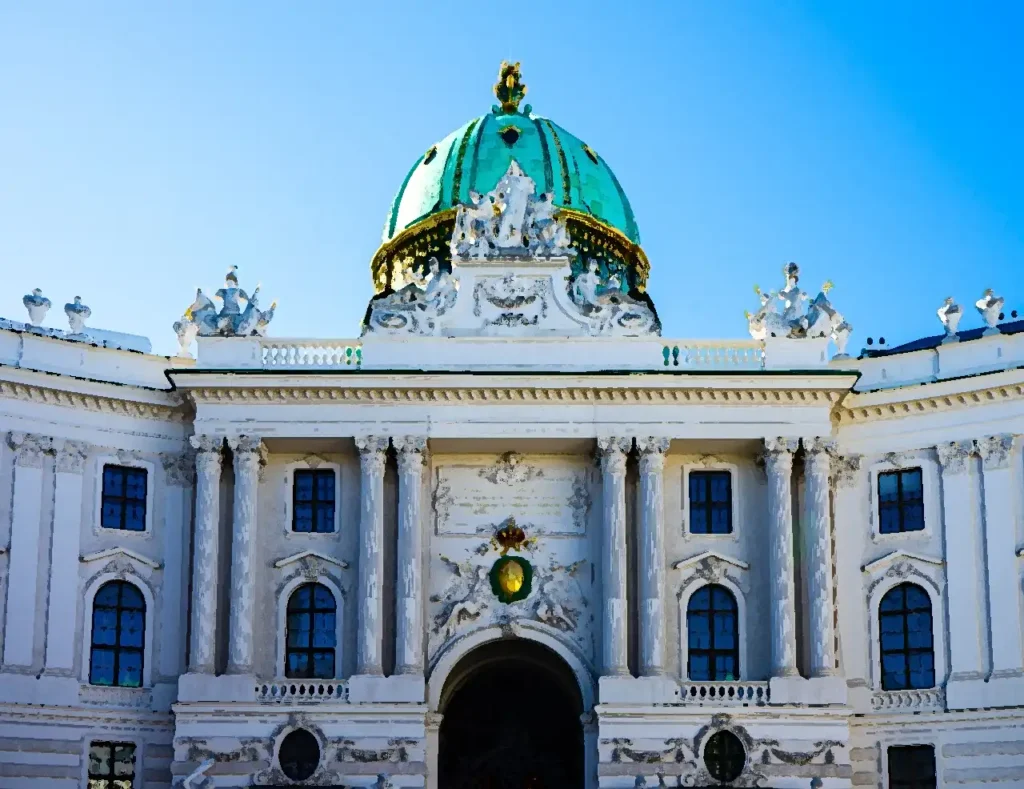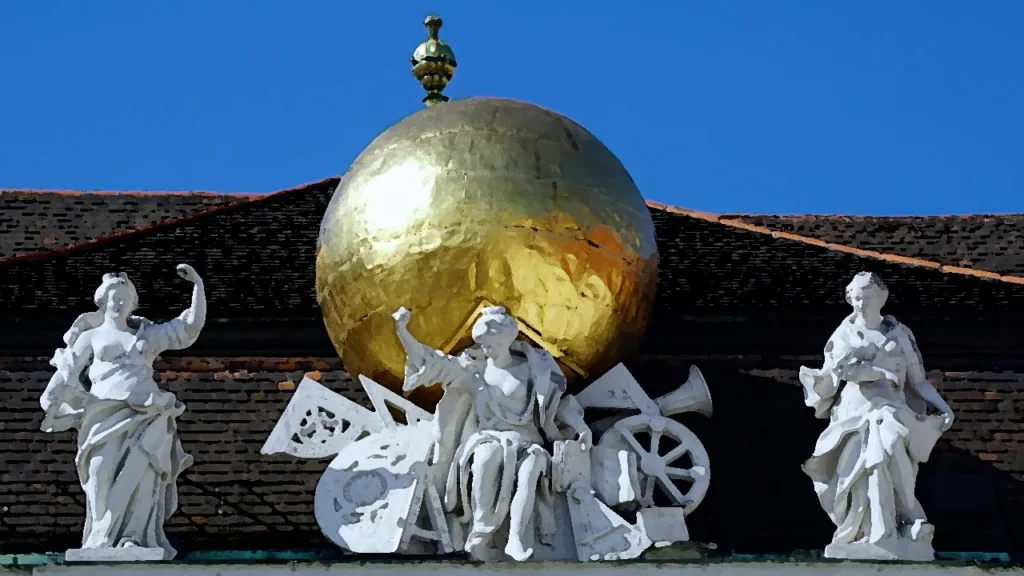A Treasure Trove of Imperial Splendor
Nestled within the Hofburg Palace complex, Vienna’s Imperial Treasury (Kaiserliche Schatzkammer) houses one of the most spectacular collections of royal treasures in Europe. Behind its unassuming entrance lies a dazzling repository of power, faith, and artistry that spans over a thousand years of European history.
Here, amid the soft glow of carefully designed lighting, you’ll discover priceless artifacts that once symbolized the might of the Holy Roman Empire and the Habsburg dynasty, whose influence shaped not just Austria but much of the world.

From Medieval Power to Modern Museum
The Treasury’s origins reach back to medieval times when emperors began collecting precious items that symbolized their divine right to rule. By the 14th century, significant regalia and religious relics were stored in various imperial residences. It wasn’t until Emperor Frederick III (1415-1493) that these treasures found a more permanent home in Vienna, as he recognized their value in projecting imperial power.
The collection grew substantially under Emperor Rudolf II, a noted patron of the arts and sciences, whose fascination with rare and unusual objects expanded the treasury beyond purely ceremonial items. As the Habsburg Empire reached its zenith in the 18th century under Empress Maria Theresa, the collection became more formalized, with inventories created to document these invaluable possessions.
The modern museum as we know it today took shape in 1747 when Maria Theresa ordered the imperial collection to be arranged for limited public viewing—one of Europe’s earliest museums. After the fall of the Austro-Hungarian Empire in 1918, the treasury transitioned from an imperial institution to a public museum, allowing everyone to admire what once was accessible only to the elite. A major renovation in the late 1980s created the modern exhibition space that welcomes visitors today.
Book a Ticket to the Imperial Treasury >>
The Imperial Treasury: Crowns, Crystals, and Sacred Relics
The undisputed centerpiece of the collection is the Imperial Crown of the Holy Roman Empire, created in the 10th century for Emperor Otto I. This octagonal crown, studded with precious gems and pearls, served as the primary symbol of imperial authority for over 800 years. Alongside it stands the Imperial Orb and Scepter, completing the set of crown jewels that once conferred legitimacy on Europe’s most powerful rulers.
Equally magnificent is the Crown of Emperor Rudolf II (later the Austrian Imperial Crown), created in 1602 as a personal crown when the original remained in Nuremberg. Its distinctive closed design, embellished with diamonds, rubies, emeralds, and pearls, exemplifies the pinnacle of Renaissance goldsmithing.
Among the most curious treasures is the Unicorn Horn (actually a narwhal tusk), believed in medieval times to detect poison and purify water. The Imperial Treasury also houses the largest cut emerald in the world, weighing an astonishing 2,860 carats.
The Ecclesiastical Treasury section displays sacred objects of extraordinary beauty, including the Holy Lance (purportedly the spear that pierced Christ’s side), fragments of the True Cross, and a nail from the Crucifixion—relics that tied imperial power directly to divine authority.
“These treasures are not merely beautiful objects; they are the physical embodiment of an idea that held Europe together for a thousand years—the concept of universal Christian monarchy. To stand before the Imperial Crown is to stand at the crossroads of European civilization.”
The Historian Edward Crankshaw
The Imperial Treasury – A Living Legacy
The Treasury continued to evolve even after the Habsburg era. The stunning Cradle of the King of Rome, created for Napoleon’s son in 1811, demonstrates how the collection expanded beyond strictly Habsburg artifacts. The Order of the Golden Fleece section showcases the spectacular insignia of Europe’s most prestigious chivalric order, still active today.
Modern curators have transformed the Treasury into an engaging museum experience, with thoughtful displays that balance historical significance with artistic appreciation. Multimedia guides in multiple languages help visitors understand the context and significance of each treasure, bringing to life the stories behind these glittering artifacts.
Book a Ticket to the Imperial Treasury >>
Visitor Experience and Practical Information
Today’s visitors enjoy a well-designed exhibition that guides them through eleven rooms, each focusing on different aspects of imperial heritage. The ambient lighting dramatically highlights the gold, silver, and gemstones while protecting these delicate treasures from damage.
The Treasury offers guided tours that provide deeper insights into the historical and cultural significance of the collection. Special exhibitions periodically showcase items not usually on display or explore specific themes related to Habsburg history.
Located in the Schweizerhof of the Hofburg Palace, the Treasury is easily accessible from other major attractions including the Spanish Riding School and Sisi Museum, making it a perfect addition to your Vienna itinerary. Photography without flash is permitted, allowing visitors to capture memories of these extraordinary treasures.

A Window into Imperial Ambition
The Imperial Treasury offers more than just a display of opulent objects—it provides a tangible connection to the ambitions, beliefs, and artistic achievements of rulers who shaped European history. Each artifact tells a story of power, faith, and the human desire to create objects of lasting beauty.